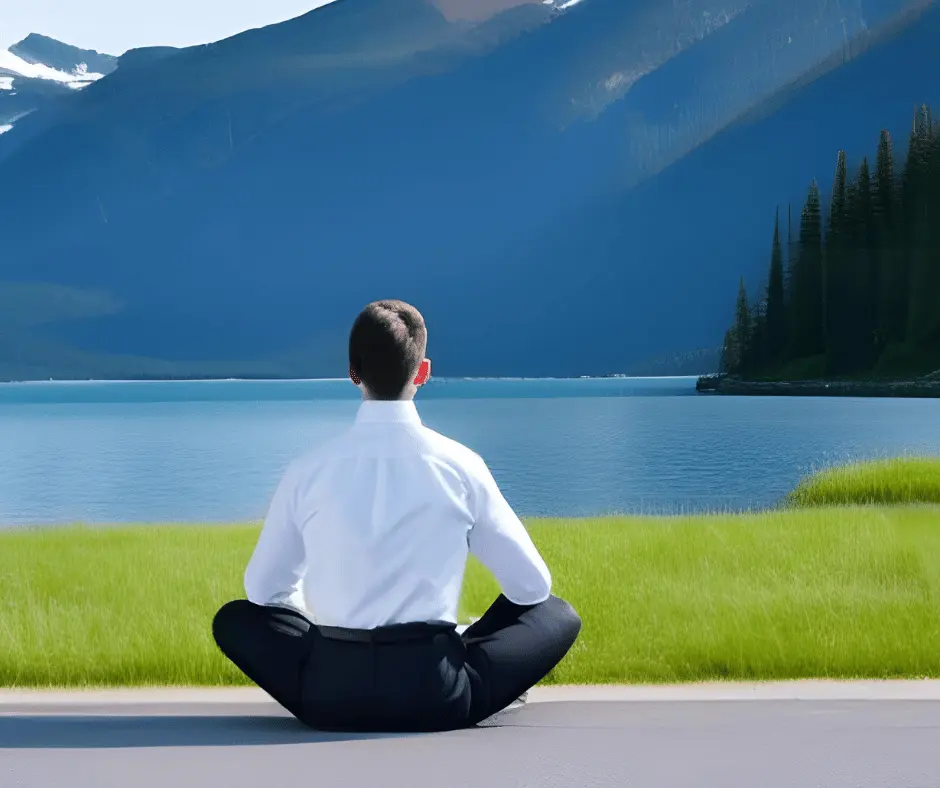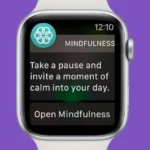Introduction
At its core, mindfulness is an art , a science , a time tested practice of being fully present in each passing moment, irrespective of the activity at hand. Relevance of mindfulness in modern times becomes much more visible .
You may ask – which activities ?
The answer is – You may be flying the spacecraft speeding towards Mars , or you may be scuba diving in the deepest oceans , you may be watering your lovely plants , you may be in the midst of communicating with your loved ones . What about these ? ..- you are waiting in a long queue for the metro train to enter your platform , you are taking that final pause just before cueing the black ball into the long pocket ..you maybe composing a mail to your workplace team members .. or may be you are just relaxing…you get the drift….you may be engrossed in any activity …
The activity , or its type , its scale , place , occasion and all other attributes do not matter at all !! If you wondered if breathing also fell into the bracket..yes.. breathing is also an activity….did you say – “silence” – Yes .of course…being in a silent mode ..is also an activity – and Mindfulness can be part of it !! Mindfulness can be part of anything – if you wish so !!
“Mindfulness is the key to life. Mindfulness is the ability to be present, to be aware of what we’re doing and where we are, and not be overly reactive or overwhelmed by what’s going on around us.” –
Sharon Salzberg
Table of Contents
Prerequisites of mindfulness – 5 essentials
What matters in practicing mindfulness is – being completely present in each passing moment and cultivating an awareness which is non-judgmental at the core – paying attention to the sensations, thoughts, and emotions as they arise, without attempting to alter or suppress them. You just become an observer …reaching that observant position also has to be fluid ..not forced …
Lets bullet point them – so it becomes easier for you to remember .
- Being completely present in each passing moment
- Cultivate a self awareness which is non-judgmental at the core
- paying attention to the sensations, thoughts, and emotions as they arise
- Make no attempt to alter or suppress the arising thoughts and sensations
- Become an observer – don’t pass judgments.
Issues facing us in the present world – Relevance of Mindfulness in modern Times
The 21st century presents unique challenges that make mindfulness particularly pertinent:
- Digital Overload: Like pets our digital devices and the constant bombardment of content in all forms constantly vie and lure us for our attention, leading to scattered focus and information overwhelm. The AI is our new found love !!
- Stress and Anxiety: The fast and erratic pace of modern life often triggers stress and anxiety.
- Disconnect from the Present: We often find ourselves dwelling on the past or worrying about the future, missing the beauty of the present moment.
Benefits of Mindfulness
The benefits of integrating mindfulness into our lives are immense – Lets look into a few of them .
Heightened Self-Awareness:
Practicing Mindfulness cultivates self-awareness, enabling us to recognize our thought patterns, habits, and reactions that might otherwise go unnoticed.
Improved Focus and Concentration:
Regular mindfulness practice enhances attention span and cognitive function, improving our ability to complete tasks efficiently.Mindfulness offers a reprieve by teaching us to choose where we direct our attention, fostering digital balance and reducing mental clutter.
Stress Reduction:
Mindfulness-based stress reduction (MBSR) techniques have been shown to lower cortisol levels in our bodies which in turn lowers the physiological effects of stress.
Read about founder of MBSR technique here
Enhanced Emotional Regulation:
Mindfulness helps us observe our emotions without reacting impulsively, fostering a greater sense of emotional control and well-being.
Better Relationships:
By fostering active listening and empathetic presence, mindfulness enhances our interactions, deepening connections and understanding and nurturing relationships with positive and proactive participation.
Becoming a self observer
Mindfulness equips us with tools to manage these emotions by teaching us to observe them without becoming entangled, fostering emotional resilience.
Self Anchoring
Mindfulness encourages us to anchor ourselves in the here and now, enhancing our capacity for joy and contentment.

Isn’t then Mindfulness same as retrospection ?
Yes and No – Mindfulness and retrospection are related concepts but they have distinct meanings and purposes. One immerses itself in the current moment and the other reflects on the past. One is only an observant , while the other is reflective and judgmental.
What do Upanishads have to say about Mindfulness
Mandukya Upanishad
Observing the Mind:
The Mandukya Upanishads introduces the concept of four states of consciousness, including the “waking” state, “dreaming” state, “deep sleep” state, and the transcendental “Turiya” state. While the term “Turiya” might not be explicitly mentioned in the Upanishad, its concept and significance are often elaborated upon in the commentaries and interpretations of the text by various scholars and spiritual traditions.
अन्तश्चरति भहिश्चक्षुः पाश्यत्याचक्षुः यतः तिष्ठति निश्चरति चाचक्षुः
अदित्यगर्भं दधिषे विश्वमुद्भूतं जायमानं जयते पुनः॥
Transliteration: antaścarati bahiścakṣuḥ pāśyatyācakṣuḥ yataḥ tiṣṭhati niścarati cācakṣuḥ
adityagarbhaṁ dadhiṣe viśvamudbhūtaṁ jāyamānaṁ jayate punaḥ.
These teaching encourages individuals to observe the mind’s fluctuations and recognize the underlying consciousness that remains constant.The Mandukya Upanishad primarily discusses the three states of consciousness – waking, dreaming, and deep sleep – and emphasizes the non-dual nature of reality.
Unity and Oneness:
The Upanishads teach the concept of Advaita, or non-duality, which suggests that there is a fundamental unity underlying all of creation. This teaching encourages individuals to perceive the interconnectedness of all things. ( Read this – This article talks about mindfulness to colours )
Mind Control and Discipline:
The Upanishads acknowledge the restless nature of the mind and offer practices for controlling and calming it. The Prashna Upanishad discusses the concept of “prana” (life force) and its connection to the mind, emphasizing the importance of mind control for spiritual growth.
Movies – Those who come close to depicting mindfulness or self awareness with varied techniques
- “Peaceful Warrior” (2006) – Based on Dan Millman’s book, this film follows a talented college gymnast who encounters a spiritual guide, imparting wisdom about mindfulness, presence, and the path to self-realization.
- “Eat Pray Love” (2010) – Adapted from Elizabeth Gilbert’s memoir, the movie showcases a woman’s journey of self-discovery through travel, meditation, and exploring different cultures.
- “The Karate Kid” (1984) – Beyond its martial arts focus, the film highlights the importance of mindfulness, discipline, and inner strength as a mentor teaches a young boy life lessons through karate.
- “A Beautiful Mind” (2001) – While not exclusively about mindfulness, this biographical drama portrays the challenges of John Nash, a brilliant mathematician who battles with mental health issues and eventually finds his own path towards healing and self-awareness.
- “The Secret Life of Walter Mitty” (2013) – This film tells the story of an office worker who embarks on an adventurous journey, reflecting themes of self-discovery, courage, and mindfulness.
- “Her” (2013) – While primarily a science-fiction romantic drama, the movie explores human emotions, consciousness, and the relationship between a man and an artificial intelligence, touching on the idea of being present and connected.
- “The Way” (2010) – A father embarks on a pilgrimage to honor his son’s memory and ends up discovering more about himself and the power of mindfulness while walking the Camino de Santiago.
- “Zen Diaries of Garry Shandling” (2018) – This documentary explores the life and comedic journey of Garry Shandling, delving into his spiritual practices and the impact of mindfulness on his creative process.
While these films may not all explicitly focus solely on mindfulness, they offer insightful perspectives on personal growth, self-awareness, and the pursuit of a more meaningful and present life.
A inspiring content is available on YouTube – Click here to view and do come back please !!
Books – On Mindfulness ( few more getting added soon)
- “The Miracle of Mindfulness” by Thich Nhat Hanh: This classic book by the renowned Zen master introduces mindfulness through practical guidance and anecdotes, helping readers integrate mindfulness into everyday life.
- “Wherever You Go, There You Are” by Jon Kabat-Zinn: Written by the founder of Mindfulness-Based Stress Reduction (MBSR), this book provides a comprehensive introduction to mindfulness meditation and its applications.
- “The Power of Now” by Eckhart Tolle: Although not exclusively about mindfulness, this influential book explores the importance of living in the present moment and gaining control over the mind.
- “Radical Acceptance” by Tara Brach: This book blends mindfulness and self-compassion, guiding readers toward self-acceptance and emotional healing through mindfulness practices.
- “Mindfulness in Plain English” by Bhante Henepola Gunaratana: A practical guide to mindfulness meditation, this book offers clear instructions and insights for both beginners and experienced practitioners.
- “Real Happiness: The Power of Meditation” by Sharon Salzberg: Focused on meditation practices, this book provides guidance on mindfulness techniques and their transformative effects.
- “The Headspace Guide to Meditation and Mindfulness” by Andy Puddicombe: Written by the founder of the popular Headspace meditation app, this book offers practical guidance and insights into meditation and mindfulness.
- “Full Catastrophe Living” by Jon Kabat-Zinn: Another book by Jon Kabat-Zinn, this one provides a comprehensive guide to using mindfulness-based stress reduction for managing stress, pain, and chronic illnesses.
- “Mindfulness: A Practical Guide to Awakening” by Joseph Goldstein: Drawing from Buddhist teachings, this book explores mindfulness as a path to self-discovery and awakening.
- “Mindfulness for Beginners” by Jon Kabat-Zinn: A beginner-friendly guide to mindfulness, this book introduces foundational practices and concepts for cultivating mindfulness in daily life.
These books offer a range of perspectives and approaches to mindfulness, making them valuable resources for those interested in exploring or deepening their mindfulness practices.
We shall certainly have a separate blog or post page which picks up each book and movie and review them – yeah that is coming up !!
Summary
In a world defined by rapid change and continuous distractions, mindfulness emerges as a beacon of presence, clarity, and well-being. By nurturing our ability to be fully engaged in the moment, mindfulness enriches the quality of our lives, helping us navigate the modern landscape with greater resilience, balance, and contentment. In embracing mindfulness, we rekindle our connection to ourselves, to others, and to the world around us, shaping a more meaningful and fulfilling existence in the midst of modernity’s hustle.
FAQ’s
What is mindfulness ?
Mindfulness is the practice of being completely present in our current moment, observing our thoughts and sensations , and fostering a deeper connection with the current moment – without being judgmental .
What is mindfulness meditation ?
Mindfulness meditation is a practice where you direct your attention to the present moment, observing your thoughts and sensations without judgment, and fostering a sense of awareness and tranquility.
What is mindfulness practice ?
It involves observing ones thoughts, sensations, and emotions without judgment and intentionally focusing attention on the toady and now. Mindfulness practices can include meditation, deep breathing, mindful eating, walking, and other activities aimed at fostering a greater sense of presence and well-being.
What is mindfulness practice in Apple Watch ?

The app encourages and prompts you to dedicate a few minutes every day to center yourself using your breath. The Mindfulness app is very simple. Simply open the app and tap Reflect or Breathe. By tapping Reflect, you’ll be shown a prompt to help you focus your attention for a set period.
What are the few synonyms of mindfulness ?
Awareness
Presence
Consciousness
Attentiveness
Alertness
Observance
Attention
Focus
Vigilance
Thoughtfulness
What are mindfulness activities ?
Mindful Breathing: Focus on your breath, while observing its rhythm and sensations as you inhale and mental exhale.
Body Scan Meditation: Gradually move your mental attention to each part of your body, noticing sensations and releasing tension.
Mindful Walking: Pay attention to the sensation of each step, the feeling of your feet connecting with the ground, and the movement of your body. Walking bare foot on grass enhances sensations .
Mindful Eating: Savor each bite of your food, noticing its taste, texture, and aroma without rushing. Chew as if each bite carries the stories of the earth, honoring the journey from soil to your sustenance.
Guided Mindfulness Meditation: Follow a guided audio or video meditation that directs your awareness to different aspects of the present moment.
Mindful Coloring: Engage in coloring with full attention, focusing on the colors, lines, and patterns as you create.
Nature Observation: Spend time in nature, observing the sights, sounds, and sensations around you without distraction.
Journaling: Write down your thoughts, feelings, and experiences in the present moment, allowing self-expression and self-reflection.
Mindful Listening: Listen to music, sounds of nature, or guided meditation recordings, immersing yourself in the auditory experience.
Mindful Stretching or Yoga: Practice gentle stretching or yoga poses while focusing on your breath and bodily sensations.
Mindful Gratitude: Take a moment to reflect on and appreciate the things you’re grateful for in your life.
Breath Awareness: Concentrate on your breath, observing its natural flow without attempting to change it.
Mindful Tea or Coffee Drinking: Engage all your senses as you prepare and savor a cup of tea or coffee.
Progressive Muscle Relaxation: Slowly tense and then relax different muscle groups in your body, cultivating a sense of bodily awareness and relaxation.
Mindful Digital Detox: Disconnect from electronic devices for a specific period, allowing yourself to be fully present without distractions.
Mindful Listening to Others: Practice attentive listening when someone is speaking, giving them your full presence without interrupting.
Mindful Showering: Pay close attention to the sensations of water and soap on your skin during your shower.
Mindful Driving: Drive with full awareness, noticing the sights, sounds, and movements involved in driving.
Mindful Breathing Breaks: Pause throughout the day to take a few mindful breaths, resetting and re-centering yourself.
Mindful Reflection: Take time to reflect on your day or experiences, observing your thoughts and feelings without judgment.
These activities help you cultivate mindfulness and bring a greater sense of awareness and tranquility to your daily life.
